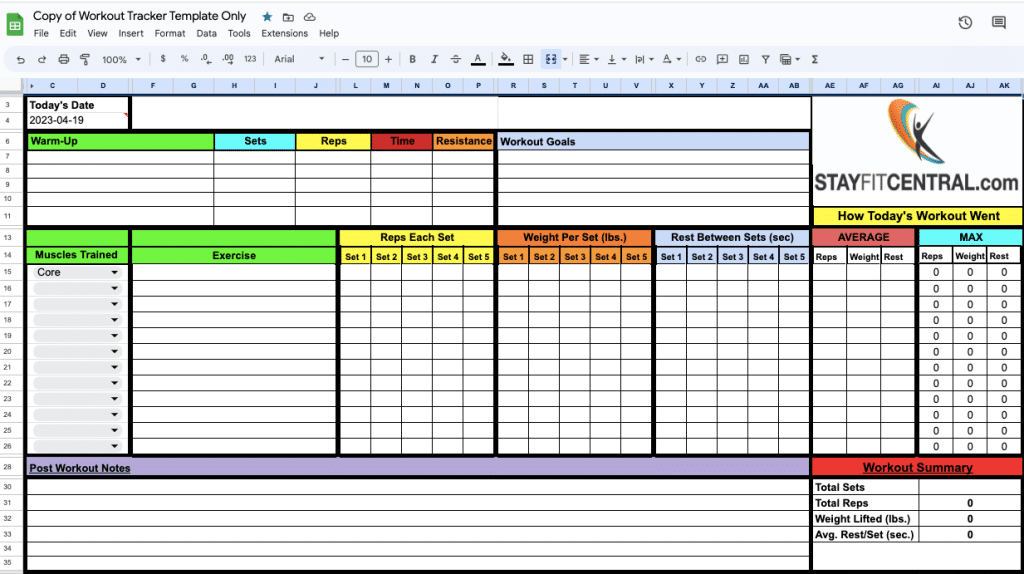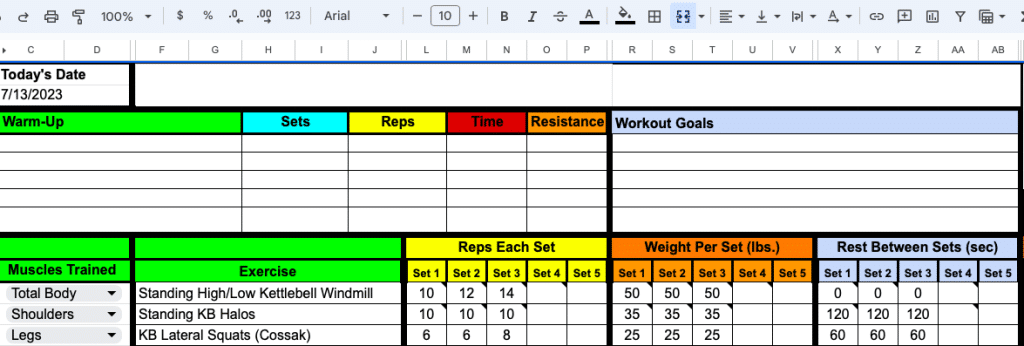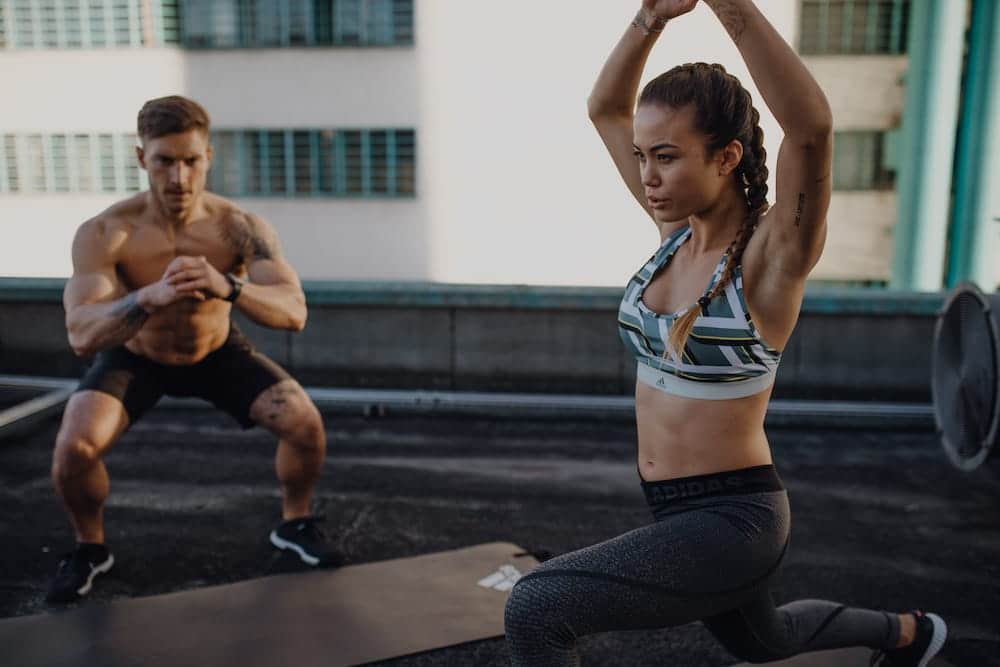Workout Tracker
How Do You Record Strength Training?
Looking to level up your weight lifting game? That’s awesome! I am too.
In this article I share with you the best ways to record your exercises, sets, reps, weight lifted, and so much more when you hit the weights. This method lets you see exactly what you need to do when you workout and analyze your results quickly and effectively.
Following the tips in this article won’t just level up your workouts either. It’ll help you make progress faster and reach your goals sooner.
This article has everything you need to know about recording strength training workouts. This includes everything from your exercises and their target muscle groups, to sets, weights used, reps per exercise, and even some bonus nuggets that most workout logs overlook.
Let’s get to it then. I’m stoked to show you how to track your workouts. I’ve broken it down into 2 sections. The first shows you what information you need in your log or tracker and how to organize it. The other section shows you how to use this information to record your strength training workouts.
Okay. Now that’s wrapped up, let’s get to the first section.
What Strength Training Information Workout Info Should You Record?
Items 1 & 2: The Foundation: Exercises and Muscles Trained
First things first, we’ll list out the exercises for your workout in a column, aptly named “Exercises”. Make sure you remember to keep the names you use for every consistent from workout to workout. This makes it possible to easily track your progress with graphs, charts and create a new workout quickly.
To the left of this column you want to add another named “Muscles Trained”. Here you’ll enter the major muscle groups used for every exercise you do. Doing this keeps your workouts balanced so you’re not over or under-training any particular muscle group.
I keep it simple and stick to the 6 groups listed below.
- Arms
- Back
- Chest
- Core
- Legs
- Shoulders
- Total body*
*The total body category is for exercises like power cleans, Turkish get ups, thrusters, etc. that require you to use the majority of the muscles on the list.
Get This Free Tracker To Record Your Workouts Quickly And Easily

Items 3, 4, & 5: The Weights, Reps, and Rest Periods For Every Set
You may wonder why we’re including them together. It’s because they’re interconnected! Instead of merely noting down “3 sets of squats” in your log, you’ll have a detailed breakdown of reps, weights, and rest for each of those sets. All in one place.
Here’s a screenshot to show you how this looks.

Don’t Forget: The Date, Your Goals, Warm-Ups, Post Workout Notes
Don’t forget to jot down the date of your workout. It’s an obvious one but supremely helpful when you want to track your progress over time.
Make room for your workout goals too! Knowing what you’re aiming for can help you stay focused throughout your session.
Then there’s the warm-up – it’s just as important as the workout itself! Note down your warm-up exercises along with reps, sets, weight used, or time spent.
Post-workout notes can be a game-changer. They give you a chance to reflect on your session, assess how you felt, whether you met your goals, and what you noticed during each set.
Last but not least, include a quick workout summary. This can be anything from averages and max weights lifted for each exercise, total weight lifted, total reps performed, and average rest between sets. It sounds like a lot, but you don’t have to program these options yourself, they’re all part of this free spreadsheet workout tracker.
Now that you know which information is necessary and how it should be organized I’ll show you how to actually record your weight training workouts.
How To Enter Your Weight Training Info Into Your Tracker
Exercises And Muscles Trained
Just one thing to make sure of here. It’s super simple. Enter every exercise for your workout in the order they’ll be done. So, if you plan on doing kettlebell swings first, make sure it’s listed that way in the Exercises column. This makes it easy to not only see how your workout will be done but to go back and easily review the workout at a later date.
Weights, Reps, And Rest Periods For Each Set
Make sure you always enter this information the same way, just like you do with your exercises. So when you write in the weight used keep it to either pounds or kilograms. Reps is self explanatory so that leaves rest between sets.
I prefer to write this information as seconds of rest. This is much easier to me than doing the arithmetic to convert seconds to fractions of minutes, i.e. use 90 seconds instead of 00:01:30. It takes up much less room on my spreadsheet too.
When recording this data, make sure it is always the right info for the appropriate set.
Dates, Warm Ups, Goals, Post Workout Notes
First, never forget to write down the date of your workout. This is one of the most important things to record so you can track your progress and review a workout at a later date. Just make sure you write it in the same way every time. It’s usually recorded as month/day/year or year/day/month.
Warm ups should be recorded the same way as your workout. Make sure you use the same names for each exercise and include all the relevant stuff. Things like the weight used, how long you did each exercise, and how many sets of each exercise were done.
Goals and post-workout notes are the most helpful when you keep them simple. Don’t write a paragraph. A few sentences for each is enough to keep you focused on your goals when you train and gain insight into what worked and what to work on the next time you train.
Wrapping Up
You now know how to create a record of every rep, every set and ounce of sweat you’ve put into your workouts. Give it a try for yourself by using our free strength training tracker. I also know that like me, you’ll quickly see that you’re having better workouts and that your strength and fitness improve at a faster rate.

